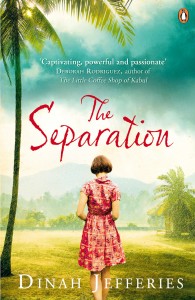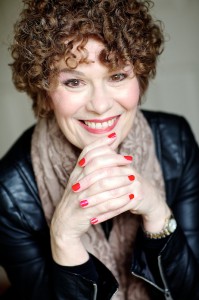Six top tips for writing historical fiction
 I love writing fiction set in the Twentieth Century. My first book, The Separation, published by Penguin, takes place during the 1950s, the second The Tea Planter’s Wife, Penguin 2015, explores the 1920s and 1930s and the third kicks off in 1940s Vietnam when it was part of Indochina. Here I share the tips I’ve discovered in writing these three historical fiction books.
I love writing fiction set in the Twentieth Century. My first book, The Separation, published by Penguin, takes place during the 1950s, the second The Tea Planter’s Wife, Penguin 2015, explores the 1920s and 1930s and the third kicks off in 1940s Vietnam when it was part of Indochina. Here I share the tips I’ve discovered in writing these three historical fiction books.
Firstly, as with all fiction, there have to be engaging characters and a story that resonates with a modern audience. I like to unravel a slice of history and then surreptitiously knit in the characters lives.
The history is there, yes, but more important is a compelling story that delivers a vivid and fascinating journey for the reader. After all, people are people. A missing child (The Separation) would be much the same for a mother in the 1950s as it would be in 2014 or 2015 – it’s every parent’s worst nightmare.
The main difference is that you’d have a lot more technology to help find the child now, but the experience, the feelings and the unbreakable bond of love would be much the same. In The Separation I chose to write about loss and betrayal but also, ultimately, courage and hope. So first off – the concerns of the novel need to be relevant to a modern audience. Pick a universal theme if you can.
The historical aspect is the sea in which the story swims, especially as the period chosen will impact on the central narrative, but you have to scatter your historical details so that they become a seamless part of the story. A lightness of touch is what is needed. Factual historical information suddenly dumped in the middle of the narrative not only slows the story down, it also can cause the reader to disengage with the entire novel. I try to include it in dialogue or slipped in here and there in small doses. Second tip – beware of the dreaded information dumps!
 When you translate real events and periods into fiction, the historical and sensory detail will create the flavour of the time. That’s how you transport your reader so that the past is happening in front of their eyes and their hearts are racing along with the characters. But authenticity and accuracy are not the same thing, and the biggest challenge is not what you put in but what you leave out.
When you translate real events and periods into fiction, the historical and sensory detail will create the flavour of the time. That’s how you transport your reader so that the past is happening in front of their eyes and their hearts are racing along with the characters. But authenticity and accuracy are not the same thing, and the biggest challenge is not what you put in but what you leave out.
The Separation explores the ‘kinds’ of danger and the colonial glamour of 1950s Malaya (now Malaysia) in a generic way, to establish the context for the story. I researched extensively, chose carefully, tried never to forget the reader and, I hope, avoided ‘showing off’ my historical knowledge. If people want history and history alone, there are plenty of great non-fiction out there. Hence my third tip is that the emphasis should be on the fiction, not the historical.
I enjoy showing the attitudes and values prevailing at the time and place. My second book The Tea Planter’s Wife, is a seductive love story on one hand, but it also explores the tragic consequences of racism. It’s set in the beautiful island of Ceylon (Sri Lanka now) when it was still under British rule in the 1920s and 1930s. I had to ensure that the racism was softened a little, but it’s still vitally there as a major part of the story.
 The very worst aspects of racism I gave to secondary characters so that my main characters wouldn’t alienate a modern reader. Because of the period I was also able to have fun with the dresses and the dancing – I love the Charleston! Fourth tip – include the way people thought at the time, and what they valued, as well as the way they behaved.
The very worst aspects of racism I gave to secondary characters so that my main characters wouldn’t alienate a modern reader. Because of the period I was also able to have fun with the dresses and the dancing – I love the Charleston! Fourth tip – include the way people thought at the time, and what they valued, as well as the way they behaved.
The Separation deals with sexism, attitudes to race, and a mother’s desperate search for her missing children. Here I had to make sure that one of my two main protagonists was a typical 1950s woman. I don’t think people realise how stifling the 1950s were for many women, nor how far we’ve come since then. For example, she would have needed her husband’s permission to open a bank account, and you’d never have seen a woman reading the news on television.
When television arrived women were only expected to present cookery or knitting programmes. My mother-in-law used to iron the newspaper before her husband came home so that he wouldn’t know his son had read it first! Fifth tip – beware of simply shoving modern characters into a past time. It won’t ring true.
Why do I enjoy writing books set in the past? Maybe because I’m drawn to history at times of change and I’m fascinated by how people survive. I love periods of social disruption and the way they impact on women/children/family. I also like stories that are a little less predictable, and so I’ve chosen to write about the last gasps of Empire – crumbling worlds where long-held assumptions are challenged – and which have had so much influence on the way we are and how we think today.
And so for my final tip. Choose a time and place that really intrigues you, or that you care about passionately, and then try to work out why. Most of all really enjoy delving into the past and your enthusiasm will shine through.
—
The Separation, Dinah Jefferies, out now in Penguin, UK, AUS, NZ, and in translation – Germany, France, Italy, Norway, Spain.
The Tea Planter’s Wife, Penguin, and in translation August 2015.
Find out more about Dinah on her website: www.dinahjefferies.com
Follow her on Twitter @DinahJefferies and Facebook: Dinah-Jefferies-Author
Category: Contemporary Women Writers, How To and Tips
Comments (13)
Trackback URL | Comments RSS Feed
Sites That Link to this Post
- Author Tips on Writing Historical Fiction | A Writer of History | January 19, 2016
- Pick of the Twitter: January, 2015 | Annie Daylon | February 9, 2015

























Great tips:) I write Victorian fiction and what concerns me most is ‘information dumping’. I need to give information readers aren’t aware of but need to know, like how long it took to travel from Yorkshire to London, in a subtle way…
I entirely agree! Your fifth tip is what most frustrates me about some books of historical fiction, especially it feels like modern characters simply playing dress up. (Doesn’t stop me from reading historical fiction, but still disappoints me.) I especially like your point about distinguishing between accuracy and authenticity. I’m preparing to lead some workshops on writing historical fiction, so I’m happy to know that my own strategies are in tune with that of the pros. Thanks!
Nicely illustrated. The goal is to make the characters live natural lives in their environment, whether historical or off-world.
All good points.
It’s a matter of speculation how people from past times thought, though, and we must remember that there have always been those people who were forward thinkers, even in their times.
Practical tips and an interesting read! Thank you!
All good points. Like the way you introduced each point with anecdote. I also am careful to give secondary characters some of the worst aspects of a time and place. Modern readers want their heroes to be heroes, with faults that aren’t too hard to overcome or turn off the reader right off the bat.
Hello, Dinah,
Thank you very much for a right-on article! I, too, write historical fiction and agree with every point! Though in school I was never a history buff, I find that I absolutely love the research necessary to right a true-to-life story, digging for the slang words of the period, the clothes, and daily news. Your books sound awesome. Blessings from Texas!
Thank you Caryl. So glad to hear you liked the article and I agree – doing the research is wonderfully rewarding. Dinah.
Thank you for the above, Dinah!
Simply & well put.
This is so true. I agree with all these points.
Very interesting and informative article, thank you. A lot rings true.